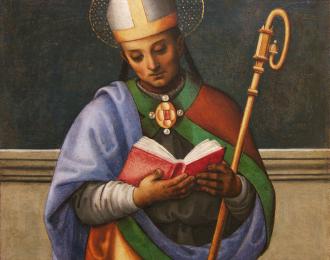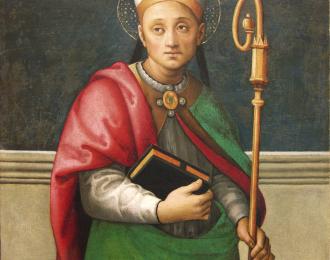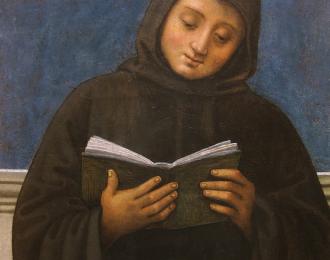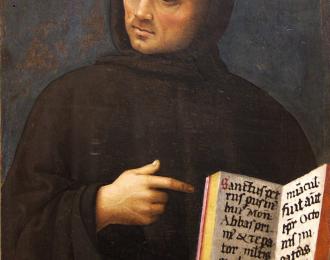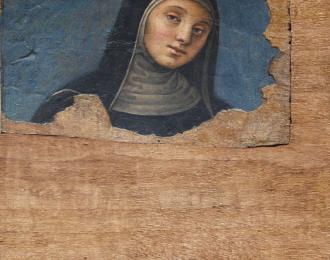San Costanzo, Sant’Ercolano, San Mauro, San Pietro Vincioli, Santa Scolastica
San Pietro Museum Complex
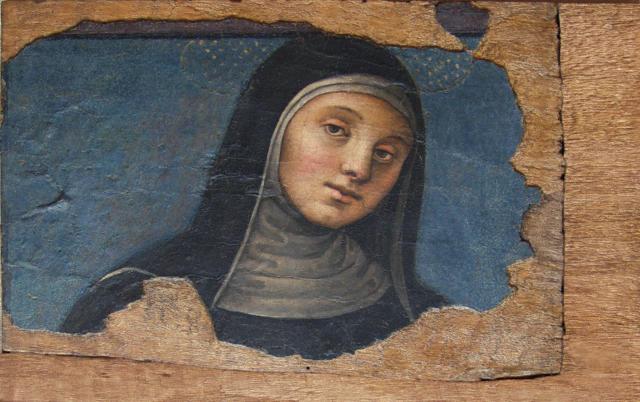
Pietro Vannucci, known as il Perugino
tempera on panels
1495-1500
In 1495 Pietro Vannucci, now at the height of his artistic career, was given a major commission by the Benedictine monks of Perugia: the San Pietro Polyptych altarpiece portraying the Ascension of Christ. The original structure of the altarpiece is not known although various scholars (first and foremost Walter Bombe) have attempted hypothetical reconstructions.
The architectural cornice of the polyptych was suggested almost a decade earlier by Giovanni di Domenico da Verona and it was to hold, besides the central panel of The Ascension and the Twelve Apostles and a lunette depicting l’Eterno tra angeli (God the Father among angels - Lyon, Musée des Beaux-Arts), two tondi of Geremia and Isaia (the prophets Jeremiah and Isaiah - Nantes, Musée des Beaux-Arts); The predella was to feature the scenes of Adorazione dei Magi, il Battesimo di Cristo and la Resurrezione (The Adoration of the Magi, The Baptism of Christ, The Resurrection - Rouen, Musée des Beaux-Arts). The episodes depicting the life of Christ were to have alternated with eight small figures of the saints, shown in half-length portraits.
This precious work of art, then valued at 500 gold ducats, was completed in 1500 but had already been altered by the end of the century when restructuring work on the church involved moving the main altar and the choir rearwards. At the end of the 1700s the altarpiece was requisitioned by the French. Most, but fortunately not all of it, ended up in Paris.
Among the works which remained onsite (and which are now conserved in the church sacristy) there are five half-length figures of the saints : San Costanzo (patron saint of the city), Sant’Ercolano (a civil defender who was the first to be interred in the church), San Mauro (one of Saint Benedict’s first followers) San Pietro Vincioli (first abbot of San Pietro) and Santa Scolastica (who dedicated her life to the Benedictine order and was also Saint Benedict’s sister). In addition to these five, a further three of the series are now housed in the Vatican Pinacoteca showing San Benedetto (Saint Benedict), San Placido e Santa Giustina, after being sent to France with the rest of the polyptych. They were recovered by Antonio Canova in 1815 and then retained by the pope on their return to Italy.
